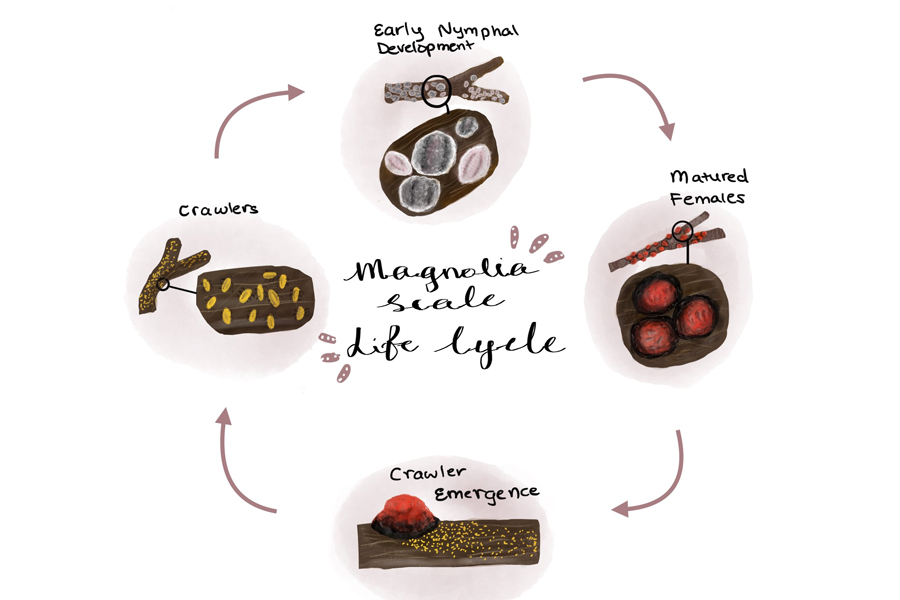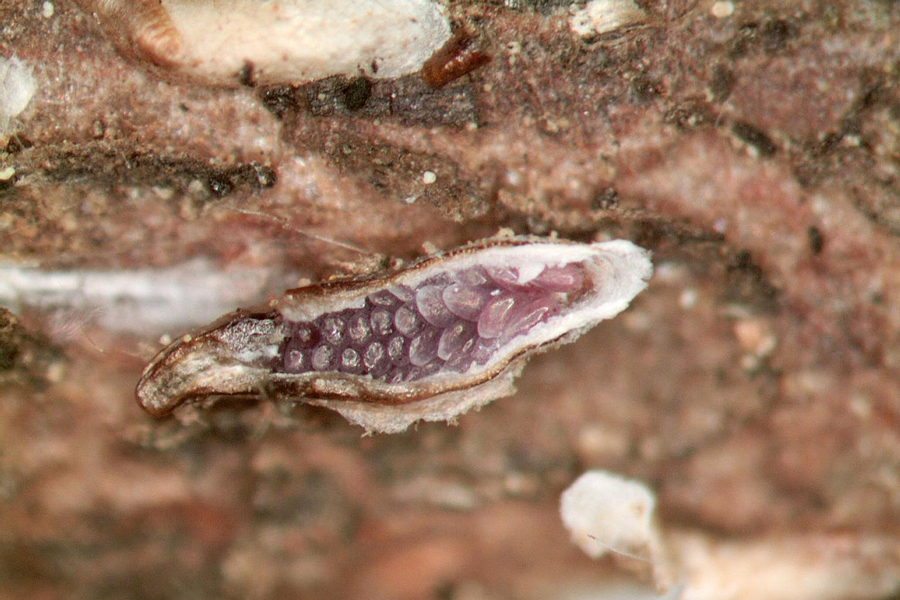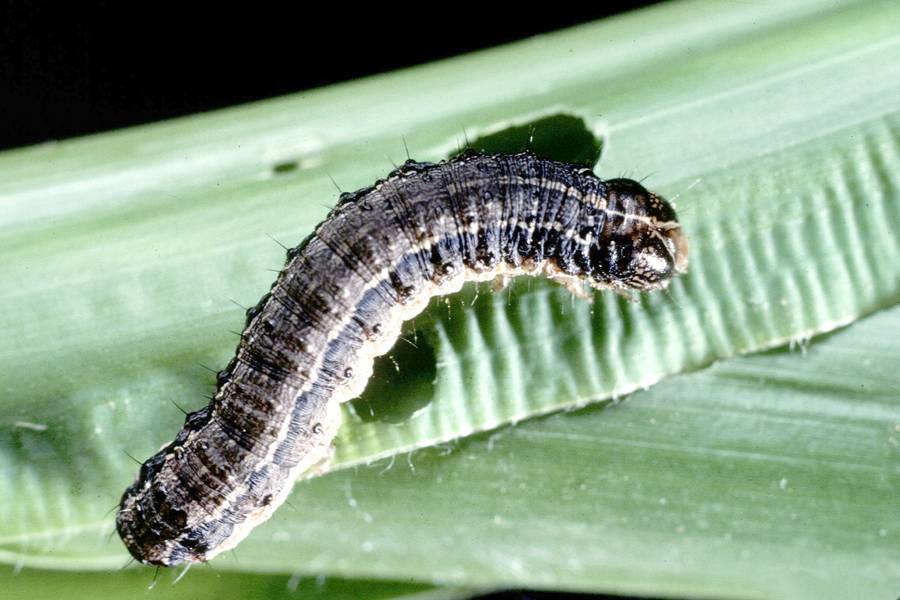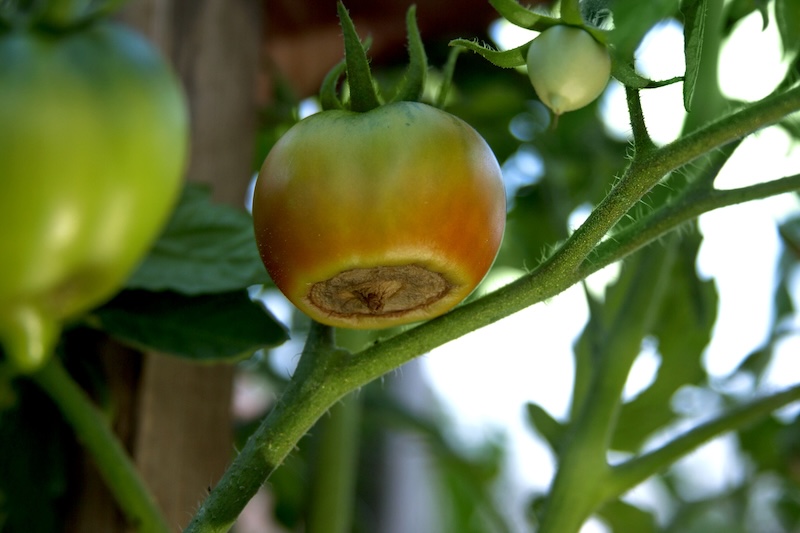Magnolias are a common landscape plant species in the southern U.S. because they are evergreen trees and shrubs. Native to Asia and the Americas, magnolias are popular tree species because of their attractive flowers, foliage, aesthetic value, low maintenance, and adaptability to the southern U.S. climate and soil conditions.

Magnolia scale (Neolecanium cornuparvum (Thro); Family: Coccidae; Figure 1), native to the eastern U.S., is a serious pest of these native and non-native magnolias. The magnolia scale is found in 29 states in the United States and can reach the size of a human thumb, making it one of the largest scales in the country. It exclusively feeds on magnolias found in ornamental landscapes.
Description and Life Cycle
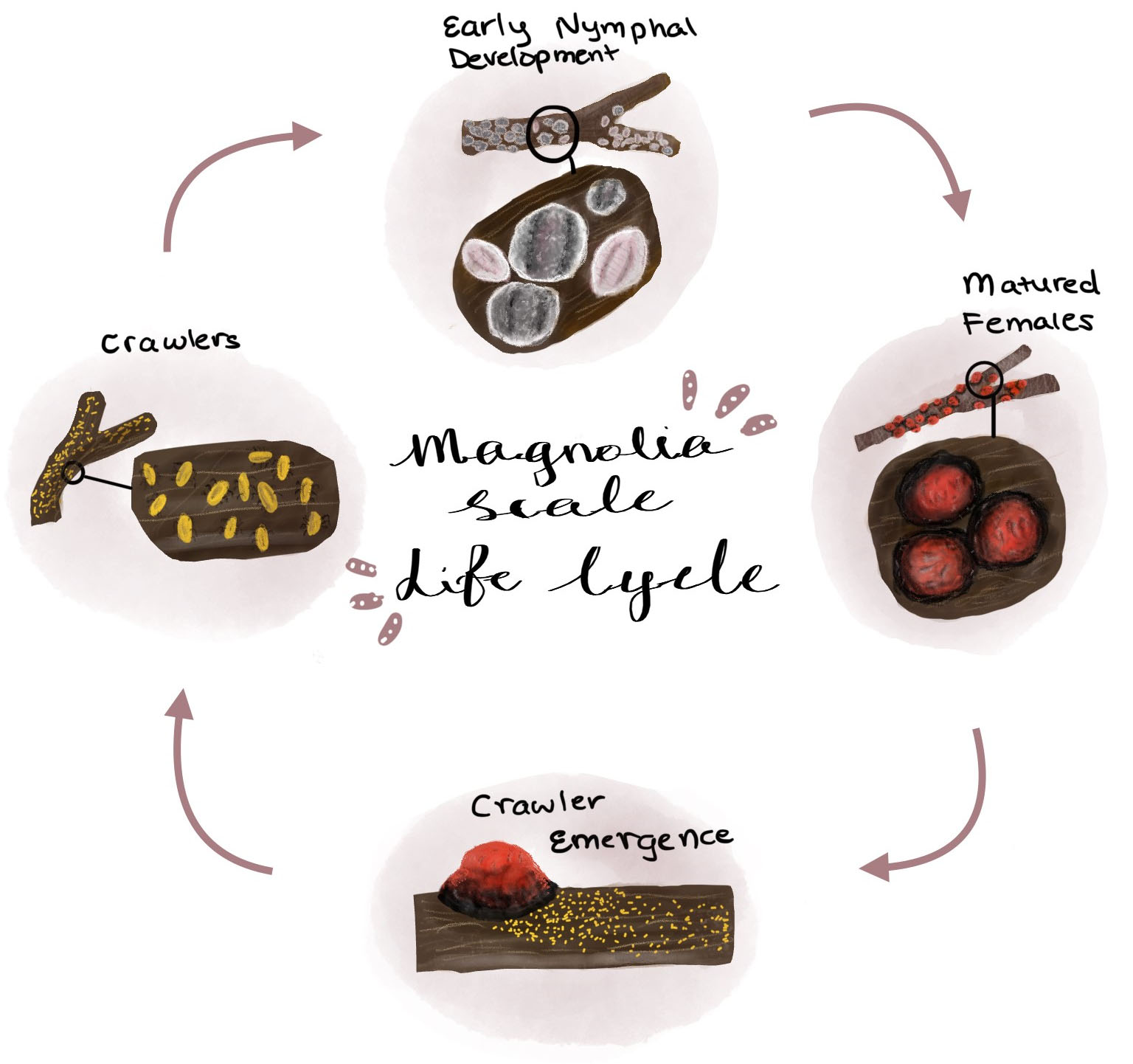
Magnolia scale completes one generation per year in the North (Figure 2). Adult females are smooth, elliptical, and convex, measuring about 12 mm (1/2 in.) in diameter. The females give birth to young (referred to as crawlers) in the fall and overwinter as first instar nymphs. Crawlers (Figure 3) often aggregate in masses on the underside of 1- or 2-year-old twigs.
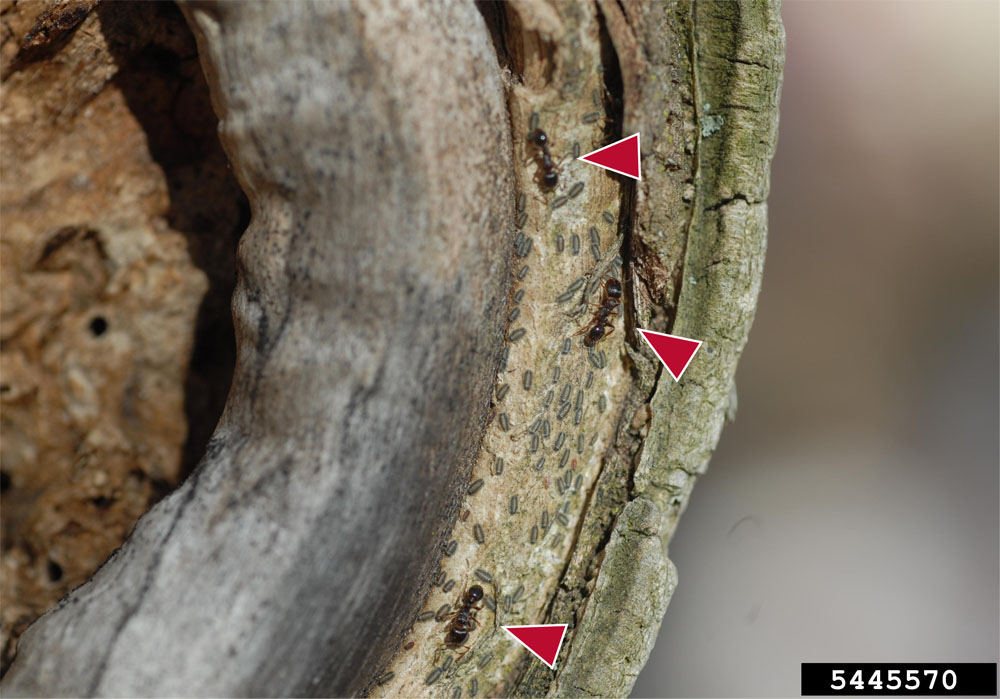
They crawlers develop through nymphal stages and molt into adult males and females (Figure 2). In the summer of the following year, crawlers will emerge again. Crawlers are small (less than 1/32 in.) and mobile, with six legs and no protective covering on their bodies.
Once they are settled on the bark, they lose all their legs and become immobile. They gradually increase in size and develop a white waxy covering over their body. At this stage, they can be easily observed without a magnifying glass.
As they develop, females change their color to dark brownish-purple and their exoskeleton (covering) hardens in the summer. Older females are brown. Males are smaller than females, approximately 1/8 in. long, and appear as gnats. Once mated, males die. Although adult females die after giving birth to crawlers, their waxy coverings remain on the stem for many weeks, giving the impression that they are all alive.
Damage Symptoms
Like other scales, magnolia scales possess piercing and sucking mouthparts. As a soft scale, they ingest sap and weaken trees by depleting essential nutrients. This causes reduced growth, yellowing of leaves, premature leaf drop, and increased susceptibility to other pests and diseases. Infested trees may exhibit reduced growth and vigor, appearing generally unhealthy. The scales ingest more sugar than they need and excrete excess sugars as honeydew (Figure 4).
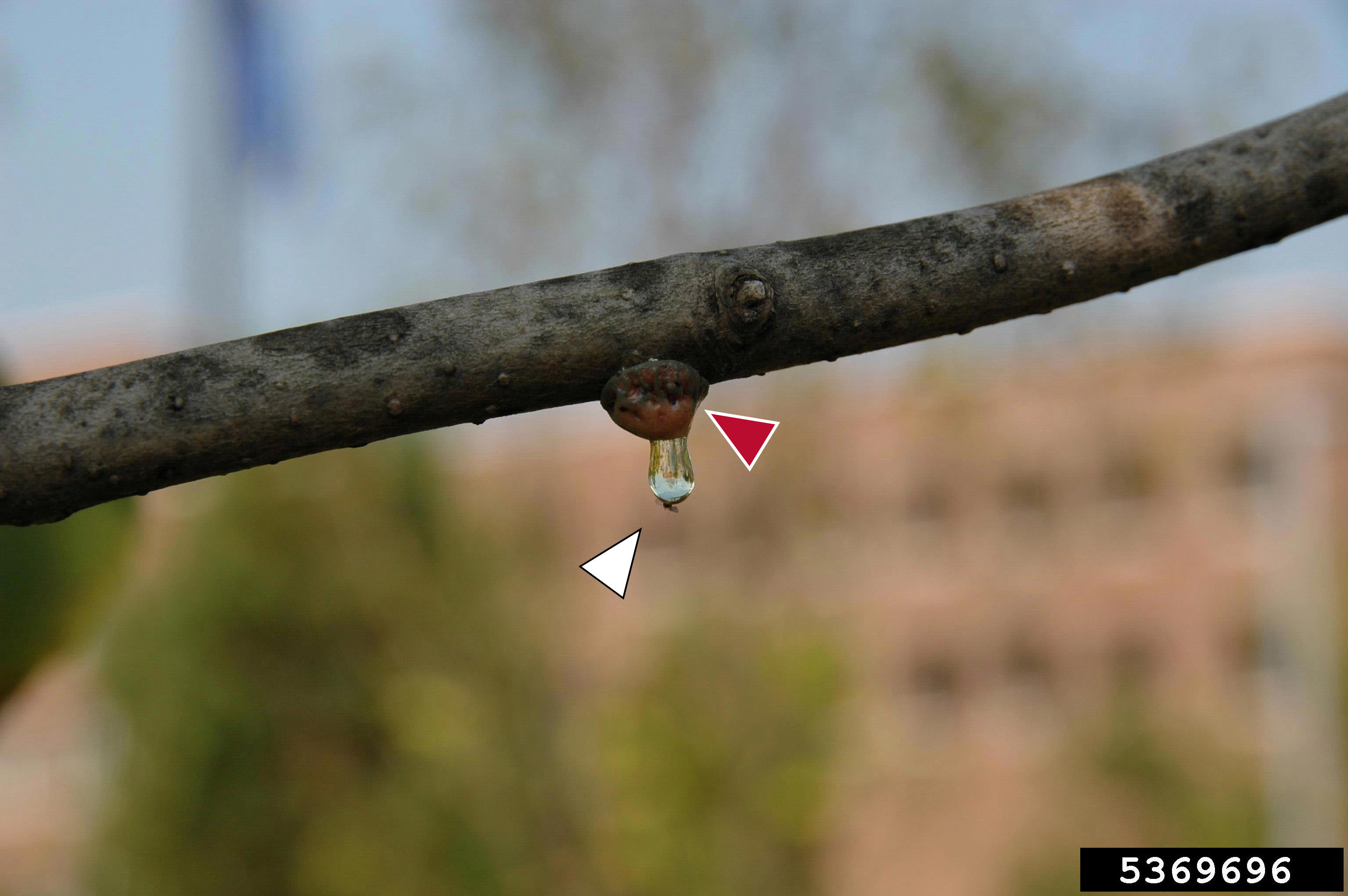
The honeydew excretion coats the leaves and stems, making the surface sticky where a black sooty mold fungus develops (Figure 5).
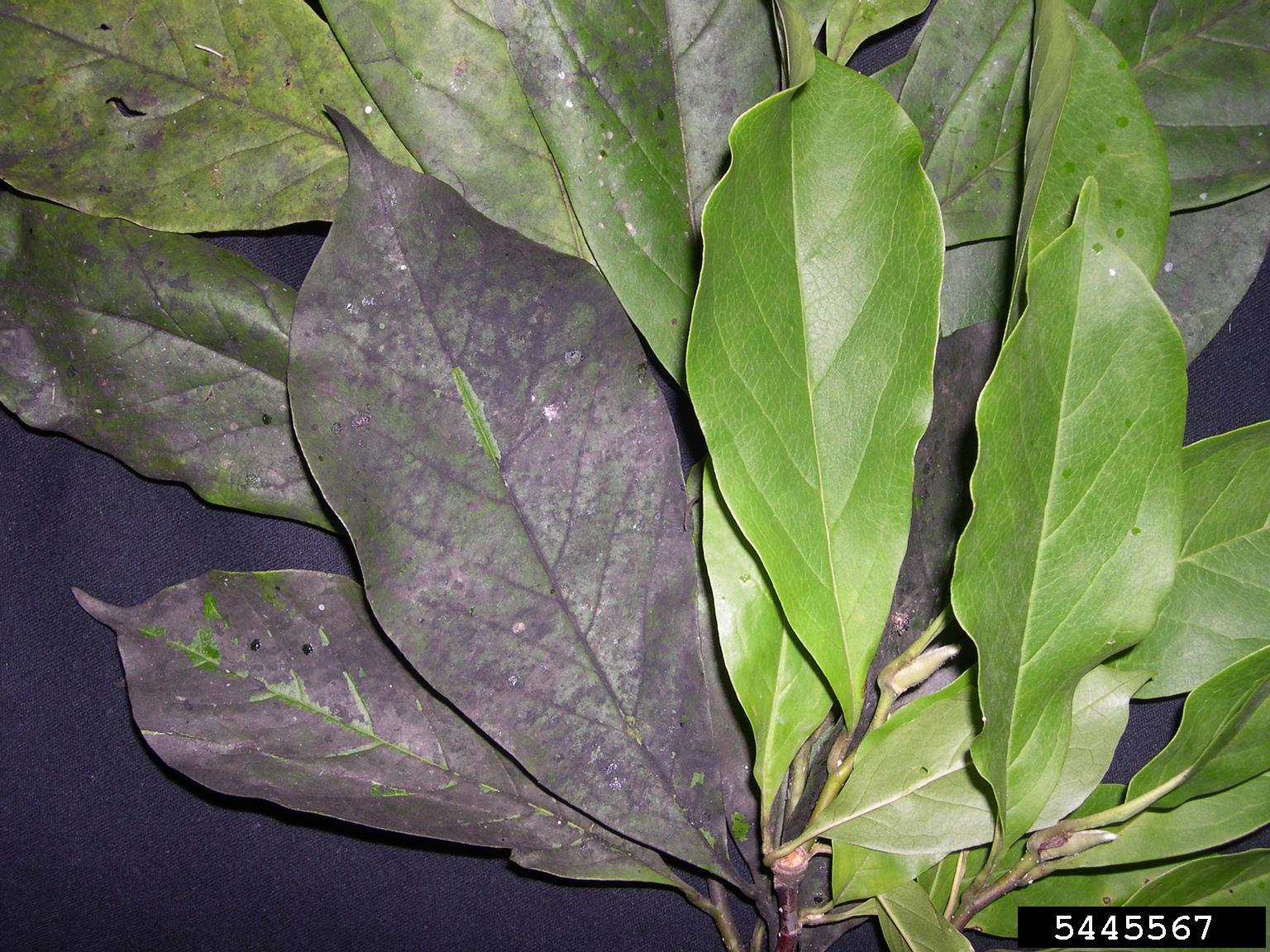
The sooty mold fungal covering reduces photosynthesis by physically blocking sunlight. The honeydew also draws ants, wasps, and flies seeking sugars for nutrition (Figure 6).
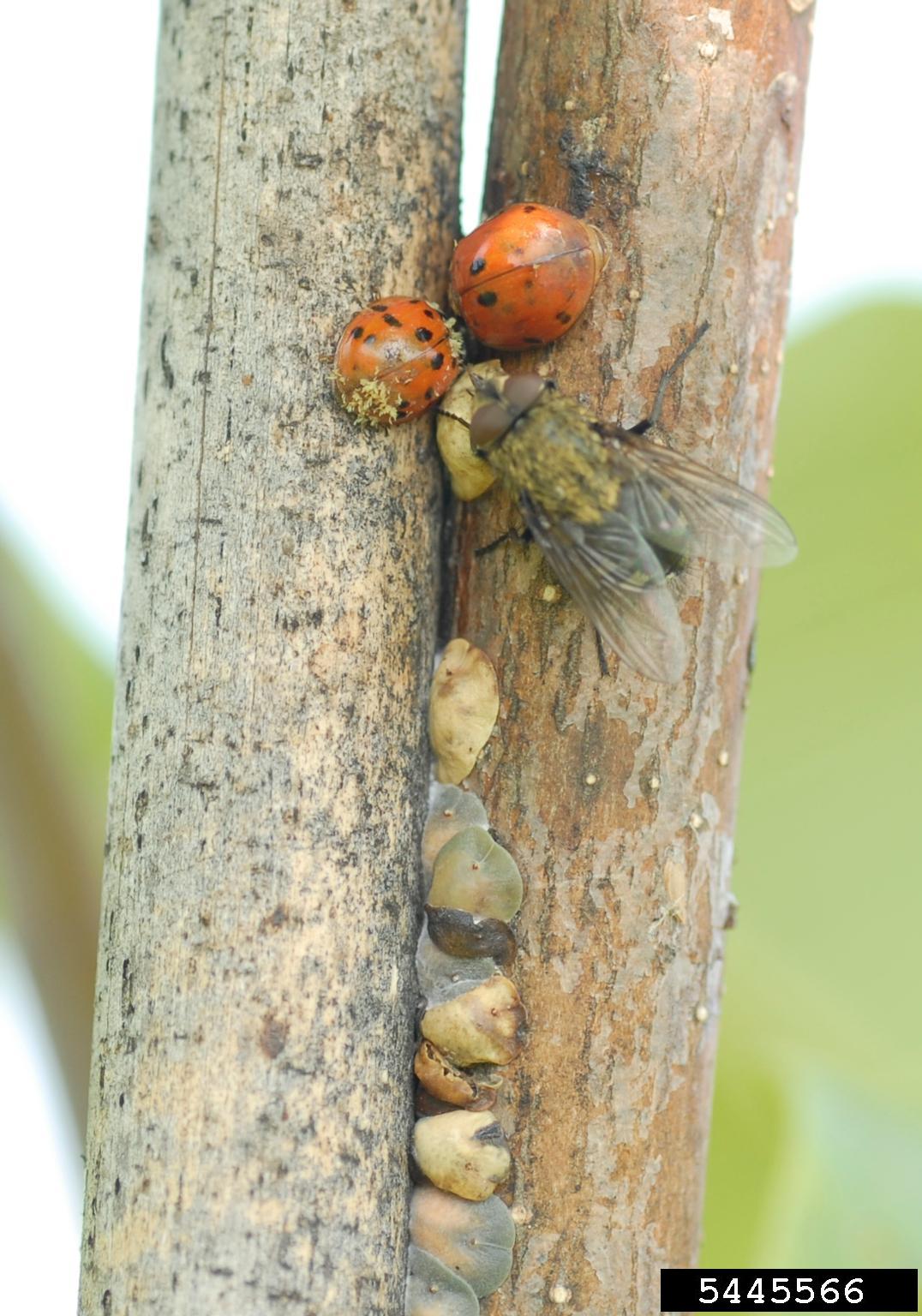
Removing infested trees is sometimes the best option to stop damage to cars and buildings caused by any dripping honeydew. Heavy infestations of magnolia scales can lead to branch dieback.
Host Plants
Magnolia scale primarily targets magnolia species, such as southern magnolia (Magnolia grandiflora), star magnolia (M. stellata), saucer magnolia (Magnolia × soulangeana), cucumber tree magnolia (M. acuminata), lily magnolia (M. liliiflora), and many magnolia hybrids.
Dispersal
Magnolia scale is primarily dispersed through plant trade between nurseries. Because females are immobile and crawlers do not typically move far away from females, they disperse locally. Crawlers can hop on the feet of birds and ants and are actively transported from plant to plant or among canopies.
Management
Magnolia scales can be managed through integrated control tactics, such as cultural, biological, and chemical control. Regularly monitoring magnolia trees, especially during late summer and early fall, will help detect adults or early signs of infestation, such as honeydew or sooty mold fungus.
Removing and destroying heavily infested branches is advised to reduce the population size and prevent the spread of magnolia scales. Adequate irrigation, mulching, and fertilization will help trees withstand and recover from infestations as well as maintain tree vigor and growth.
Planting resistant magnolia varieties, such as M. grandiflora (‘Little Gem’) and M. virginiana, is advised to reduce infestation. Adults and larvae of lady beetles (Hyperaspis signata), syrphid larvae (especially Ocyptamus costatus), lacewings, encyrtids, and eulophid parasitic wasps help reduce magnolia scale infestation.
Since broad-spectrum insecticides (such as neonicotinoids) can harm naturally occurring predators and parasitoids, it is advised to only use them if all other alternative options have been exhausted or have provided limited control.
Horticultural oils applied during the winter as dormant sprays can reduce scales that overwinter. Systemic insecticides (such as neonicotinoids, dinotefuran, imidacloprid, etc.) applied as bark sprays or soil or stem injections can reduce magnolia scale problems. Because neonicotinoid insecticides are implicated in harming pollinators, such as bees, these insecticides must be used according to label instructions.
Because of the waxy layer on their bodies, adult scales are often shielded from chemicals. Application of contact insecticides, like pyrethroid insecticides (such as bifenthrin and permethrin) and insect growth regulators (such as pyriproxyfen), can be timed in the summer to target the crawler stage. Always thoroughly read the label instructions before using insecticide, as the label is the law.
References
Herms, D. A., & Nielsen, D. G. (2004). The magnolia scale: Biology and management of a key pest of magnolia. In J. A. Chatfield, E. A. Draper, H. M. Mathers, P. J. Bennett, D. E. Dyke, & J. F. Boggs (Eds)., Ornamental Plants Annual Reports and Research Reviews 2003 (Special Circular 193). Ohio State University Extension. http://hdl.handle.net/1811/71940
Knox, G. W., Klingeman, W. E., Paret, M., & Fulcher, A. (2012). Management of pests, plant diseases and abiotic disorders of magnolia species in the Southeastern United States: A review. Journal of Environmental Horticulture, 20(4), 223–234. https://doi.org/10.24266/0738-2898.30.4.223
UK Nursery and Landscape Program. (2010). 2009 UK nursery and landscape program research report (Publication No. PR-602). University of Kentucky Extension. https://publications.ca.uky.edu/pr-602
Whittaker, A. (2015). Neolecanium cornuparvum (magnolia scale). CABI Compendium, 119071. https://doi.org/10.1079/cabicompendium.119071
